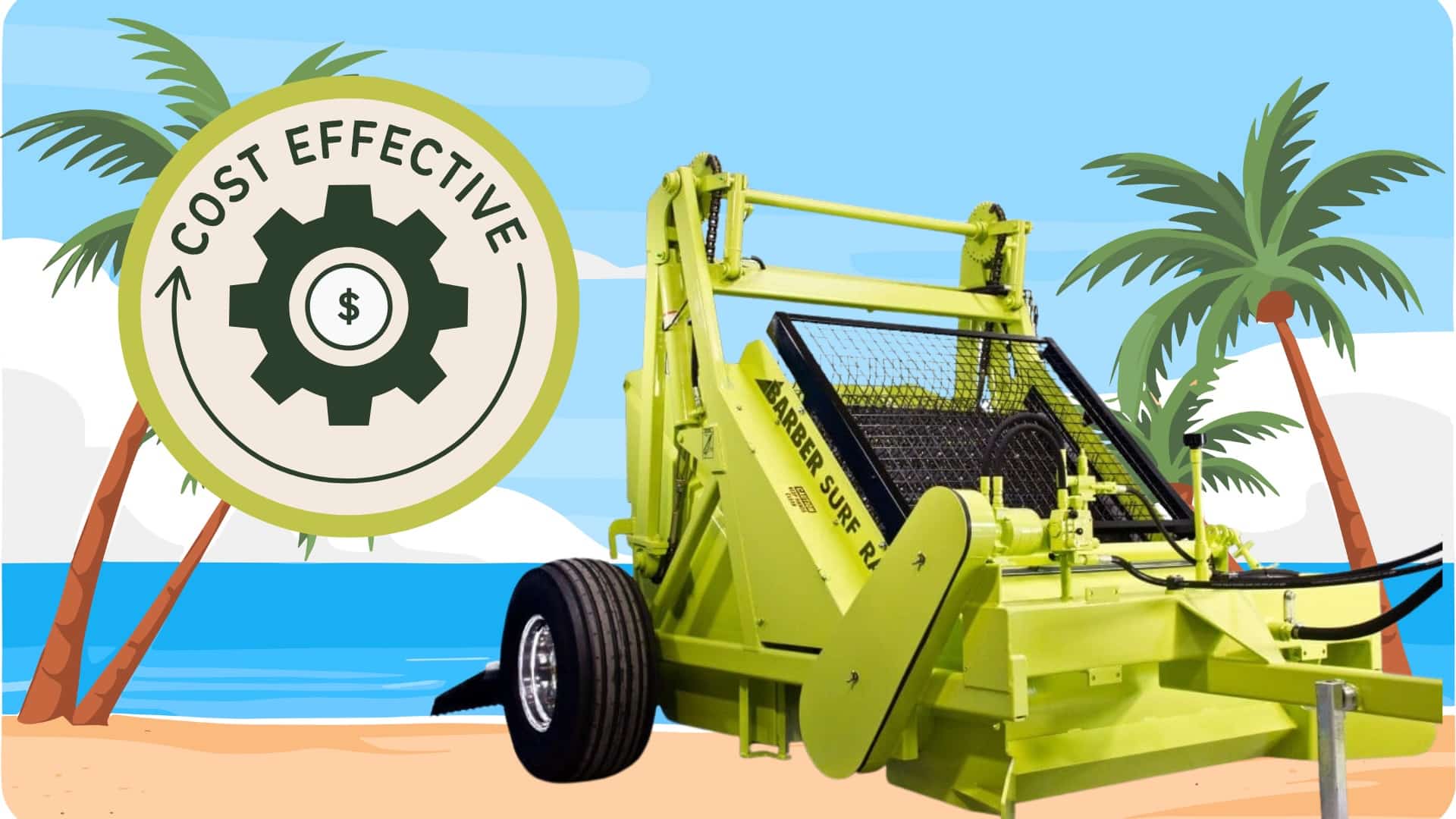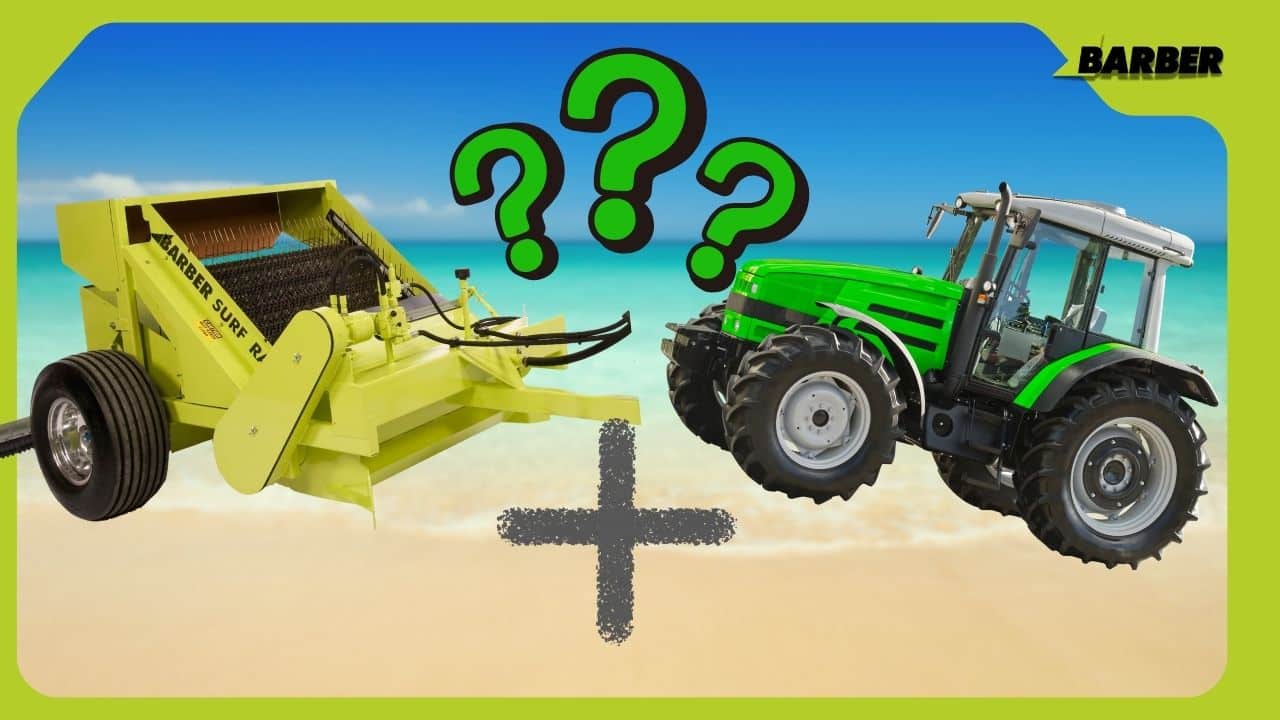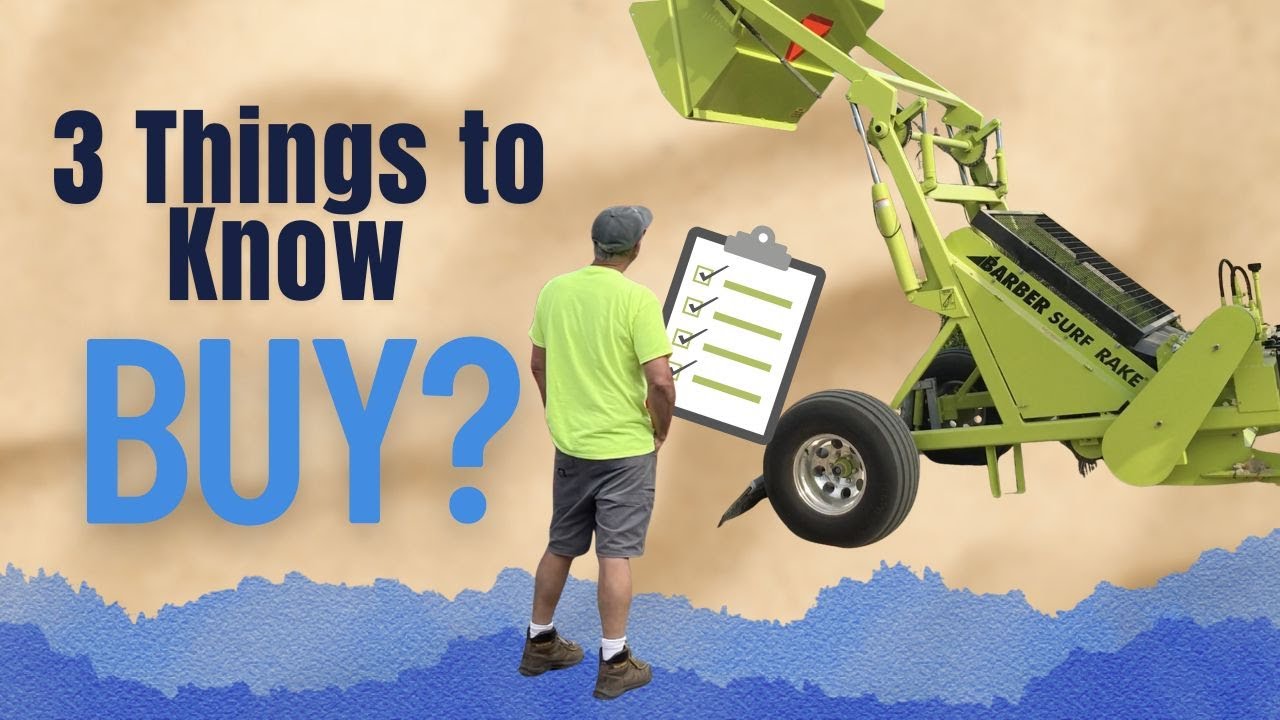Cleaning capabilities that adapt to the size of debris and conditions of your beach
The Surf Rake® is designed to collect a wide range of debris sizes—from small, sharp items you never want on a play beach, to bulky storm wash-ups like driftwood and large plastics. Operators can adapt to a wide range of debris types and sand conditions, so that the Surf Rake will pick up materials in conditions that would normally not be possible with traditional screening and sifting beach cleaners.
[01:00:01:10 – 01:00:04:11]
Question that often arises is how large
[01:00:04:11 – 01:00:08:13]
piece of debris can you collect and how small a piece of debris can you collect?
[01:00:11:03 – 01:00:15:07]
The surf rake will collect rocks up to the size of coconuts.
[01:00:15:20 – 01:00:19:23]
We recommend that if you find rocks that are bigger than that that you remove them
[01:00:19:23 – 01:00:23:14]
prior to cleaning. But anything from the coconut size on down,
[01:00:23:14 – 01:00:26:00]
the surf rake is going to handle relatively easy.
[01:00:26:14 – 01:00:36:03]
The smallest size debris, you’re going down to about a quarter of an inch. The question that comes up often is small material given the distance on our tines.
[01:00:36:03 – 01:00:50:11]
They’re offset, so you don’t have one row that comes directly behind the row. The preceding row is offset. The tines will go right between. So if you were to miss a piece of debris, that it would be centered by the first two tines. And
[01:00:50:11 – 01:00:52:09]
then the next tine is going to hit it head on.
Table of Contents
Size ranges, from small to large (with example materials)
Below is a list of the types of materials the Surf Rake regularly removes for customers–all of which can be removed by making simple adjustments. (see sections 3–4).
A) Fine & small debris (detail cleaning)
- Cigarette filters and butts
- Small plastic fragments, bread twist ties, straw pieces
- Caps, tear-off tabs, foil bits, confetti, small shell pieces
- Broken glass fragments

B) General litter & natural debris (everyday grooming)
- Food wrappers, napkins, cup lids, utensils
- Beverage cans and small bottles
- Seaweed/kelp strands and clumps, eelgrass, leaves, pinecones
- Typical beach toys and lost items (paddles, flip-flops)
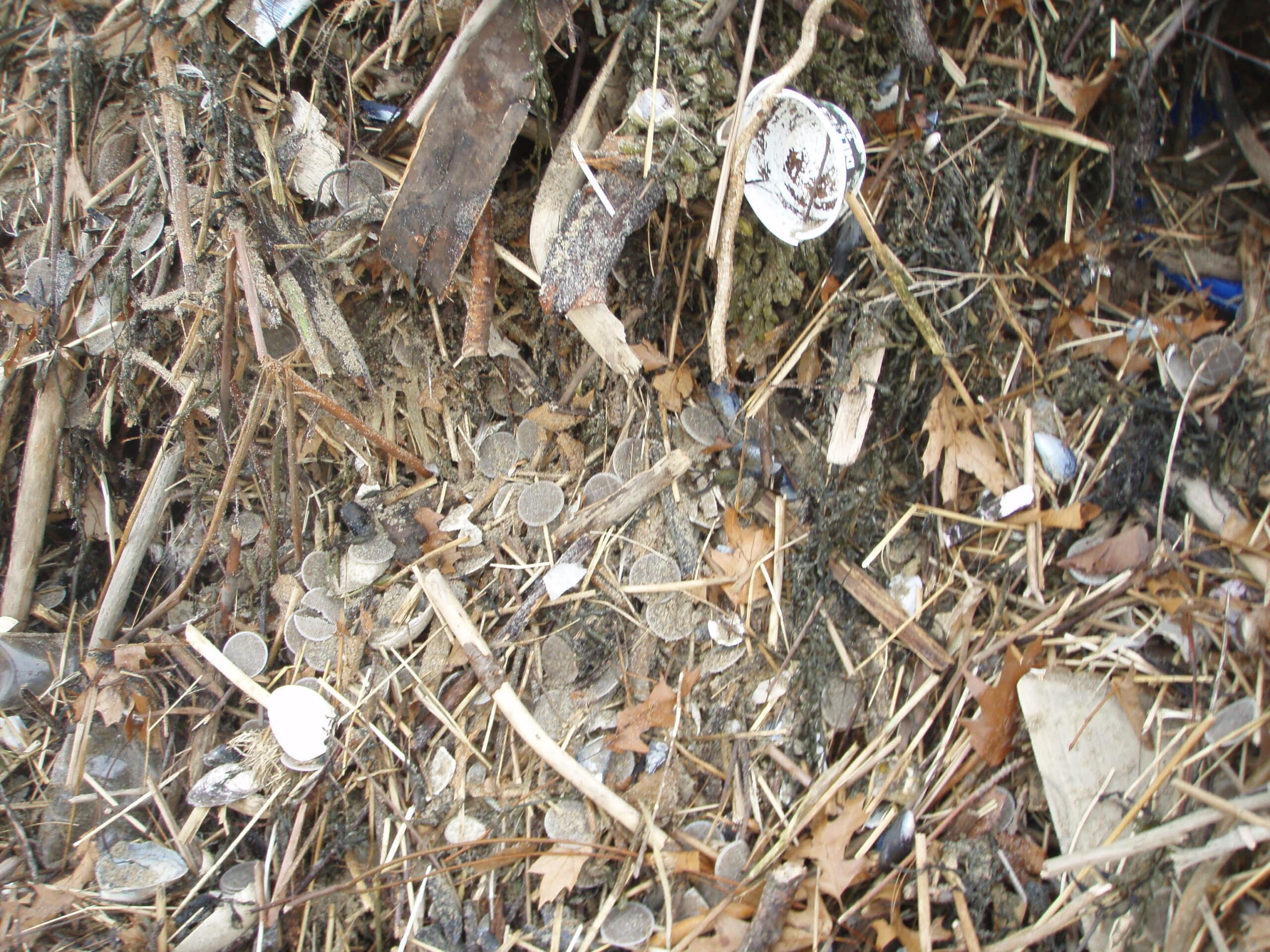
C) Larger items & post-event / storm material
- Tangled seaweed windrows
- Larger plastics (crates, buckets, signage)
- Driftwood pieces, sticks, branches
- Rope, netting, and other marine debris
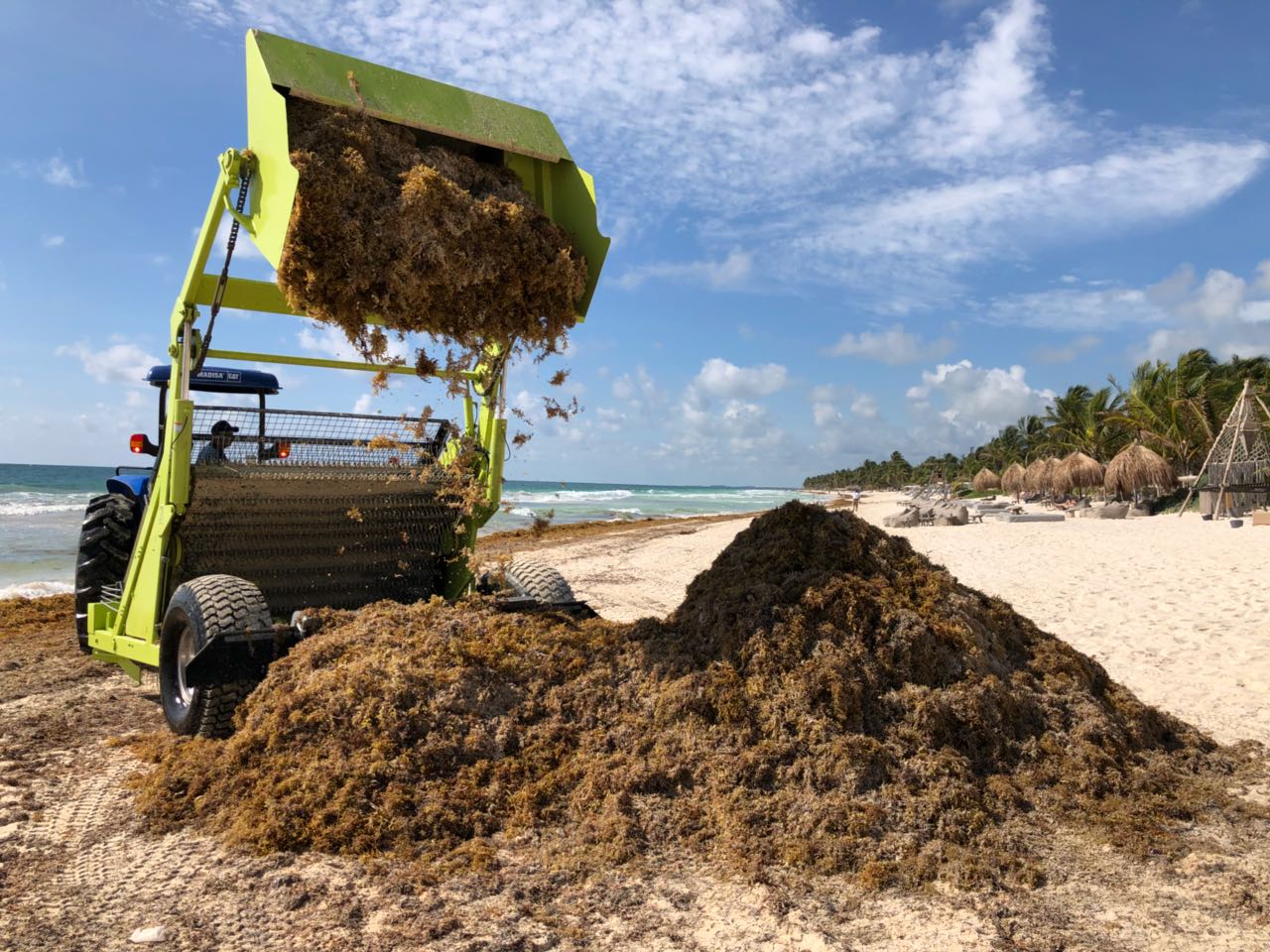
How to adjust the Surf Rake for different conditions
One of the greatest strengths of the Surf Rake line of beach cleaners is that they can adapt to match the size of materials you’re trying to remove and the beach’s conditions at the same time. Instead of outfitting a machine with one-sized sifting screen that performs well in dry sand but not in wet sand or vice-versa, the Surf Rake can simply change settings from the tractor, based on the conditions.
Cleaning dry sand by high-trafficked areas of the beach? Speed up the conveyor, dig deep, and pull up potentially hazardous sharp, small material.
Need to then do a couple passes by the tideline to pick up excess seaweed? Simply expose the tines and skim the surface.
Then, if there’s a part of the middle beach that’s mostly clean, dig more shallowly, increase the ground speed of the tractor and clean much faster than you could, if your machine had been fit for the other cleaning conditions.
This versatility makes the Surf Rake the most popular beach cleaner for municipalities and resorts around the world.

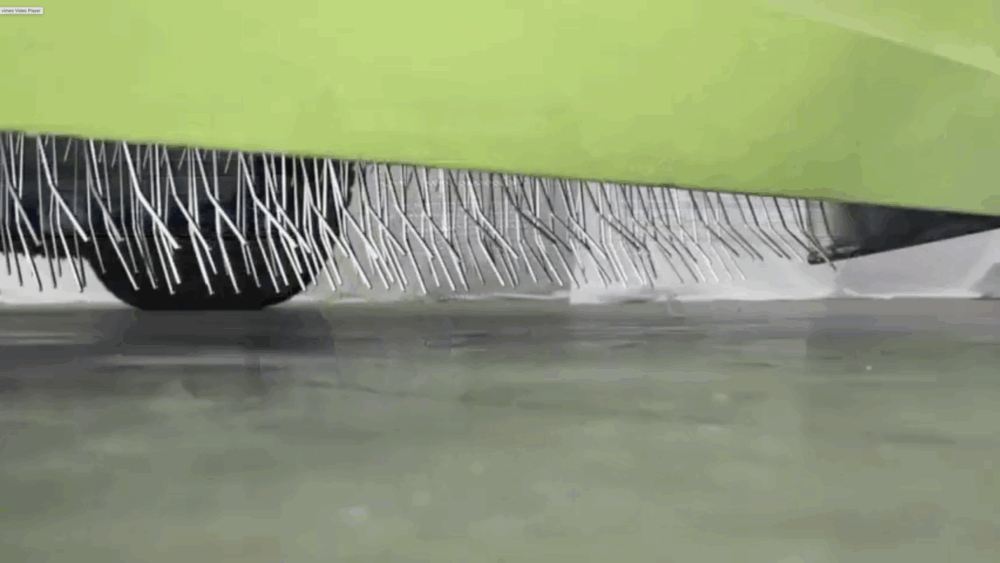
How to Adjust the Surf Rake to Pick up Different Materials in Varied Beach Conditions:
Adjusting three specific variables from the tractor allow you to adapt to all these material types and beach conditions.
A) Depth of cleaning (≈ 1–6 inches)
Simply adjust the height of the Surf Rake’s moldboard to reveal more or less of the tines to dig deeper or less into the sand. The moldboard will grade the sand and ensure an even clean, while the tines dig behind it.
- Shallower (1–2″): Better for large surface debris and cleaning at the tideline, as to not disturb ocean life.
- Deeper (3–6″): Useful for deep cleaning dry sand and precision cleaning high-traffic areas.
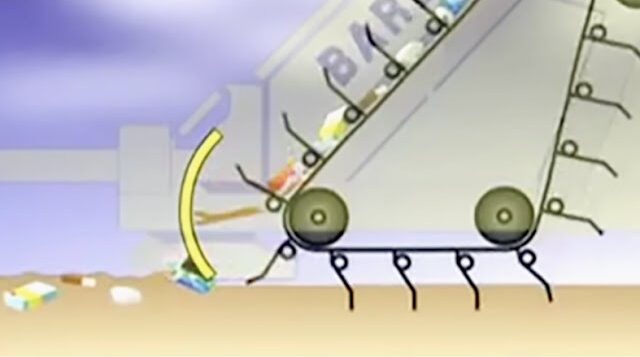
B) Conveyor speed (belt speed)

Adjust the conveyor speed to vary the size of the material you’re removing.
- Higher conveyor speed → favors smaller materials.
Faster transfer keeps small items moving up and into the hopper instead of dropping back. It also allows more rows of tines to comb each square meter of sand, increasing the cleaning ability. - Lower conveyor speed → favors larger materials.
Gives heavier pieces time to settle and ride the belt while minimizing wear.
C) Ground speed (tractor speed across the beach)
- Slower ground speed → favors smaller materials.
Tines spend more time under each square foot of sand. - Faster ground speed → favors larger materials.
Efficient for bulky seaweed, driftwood, and post-event litter. - Balanced “middle” ground speed → captures a broad mix.
Great for day-to-day municipal grooming when you want both fine litter and general debris in one pass.
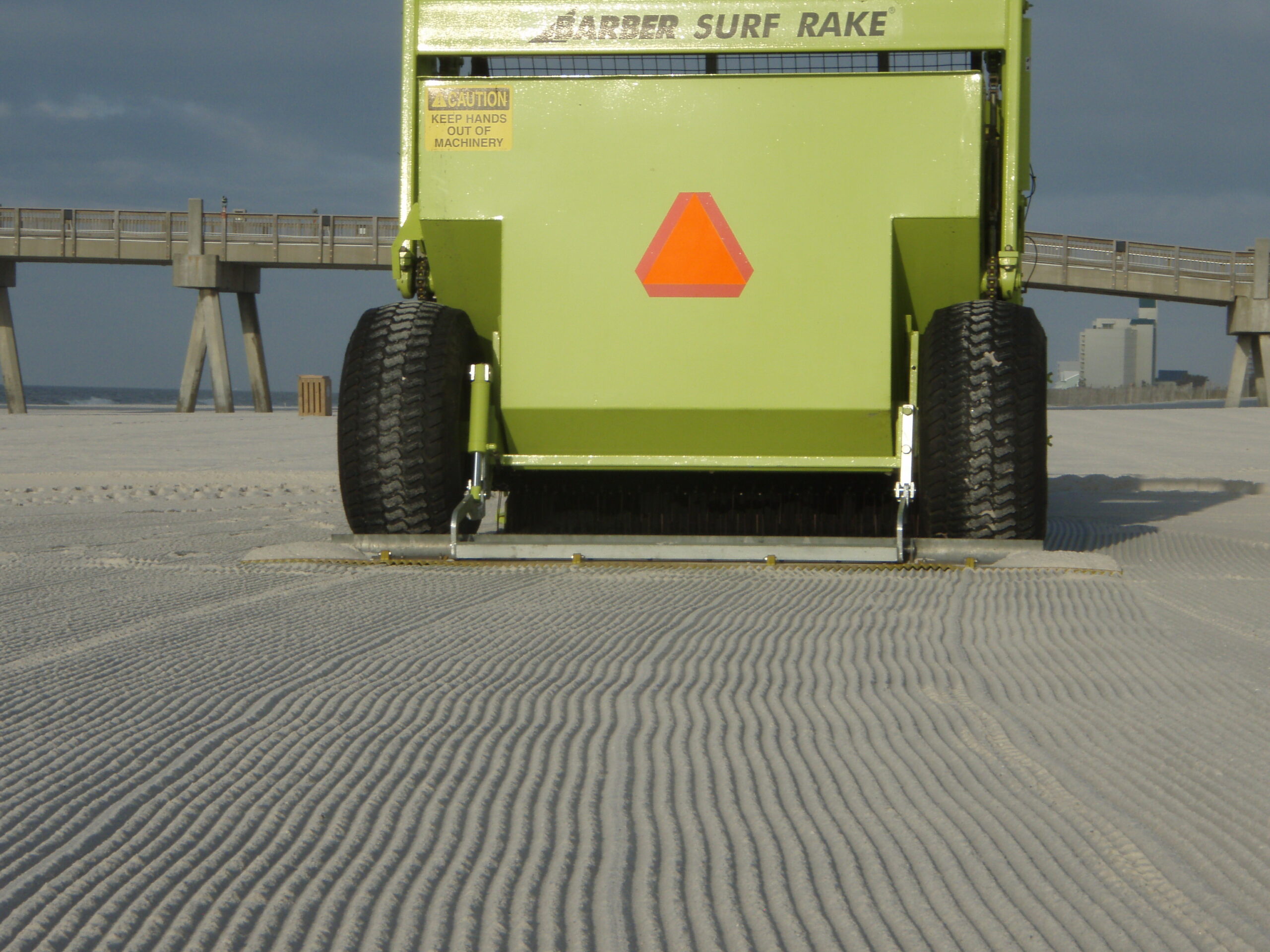
By adjusting these three variables, operators can adjust to changing beach conditions during the same clean, without getting out of the tractor or adjusting the machine manually.
small materials captured in a single pass
Versatility across use cases
Because you can tune the machine to conditions (instead of fighting a clogged screen), the Surf Rake is used across a wide range of applications:
- Sports & tournament prep (e.g., beach volleyball): remove sharp fragments and fine litter for safe play zones.
- Concerts & large events: sweep a wide variety of litter types efficiently.
- Day-to-day municipal grooming: balanced pass that gets everyday small + general debris.
- Hurricane/storm recovery: lift large debris like driftwood and big plastics, then follow with a slower detail pass for fine material.

next steps
✔ Learn more about how the Surf Rake uses tine raking technology to remove small debris from the sand: https://www.hbarber.com/beach-cleaning-machines/surf-rake/how-it-works/
✔ Do you have small debris you need removed from your beach? Contact a team member for personalized beach cleaning recommendations for removing it.
FREQUENTLY ASKED QUESTIONS
With the right settings, it reliably collects very small litter down to 3/8 inch or 1 cm—like cigarette filters, small plastic fragments, caps, and glass pieces.
Wet, heavy sand can make small-item pickup harder because it’s tougher to separate. However, the Surf Rake is one of the only machines that can clean wet sand, because the tines rake through it, instead of trying to lift the beach onto a screen, which typically clogs under wet-sand conditions, let alone removes the debris.
By raising the moldboard and exposing more tines and traveling at a lower ground speed, operators can then skim the surface of the beach to remove large debris. The machine can also be lifted with the three-point-hitch and lowered on top of larger debris to collect it. Many teams do a quick “bulk pass” first, then a slower “detail pass” for fine material.
No. It uses spring tines feeding a perforated conveyor belt—not a vibrating sifter screen—so it doesn’t clog the way screens can in damp, seaweed-heavy conditions. The tines lift the debris from the sand and deflect it onto the moving conveyor, where it pinballs between tines, knocking off sand, which falls back to the beach through the perforations.
A common misconception is that the Surf Rake can only pick up items larger than the space between any two tines. In reality, the tines are arranged in offset rows. That means an item that slips between two tines in the first row will be intercepted by a tine in the next row, then transferred onto the conveyor belt. Combined with the right depth, conveyor speed, and ground speed, this offset pattern is what lets the Surf Rake reliably collect small, irregular debris without needing a vibrating sifter screen.
Yes for most day-to-day grooming. During times of heavy debris, like after storms or large events, many operators opt to run two passes: a faster pass for bulky debris, followed by a slower pass for fine detail.


